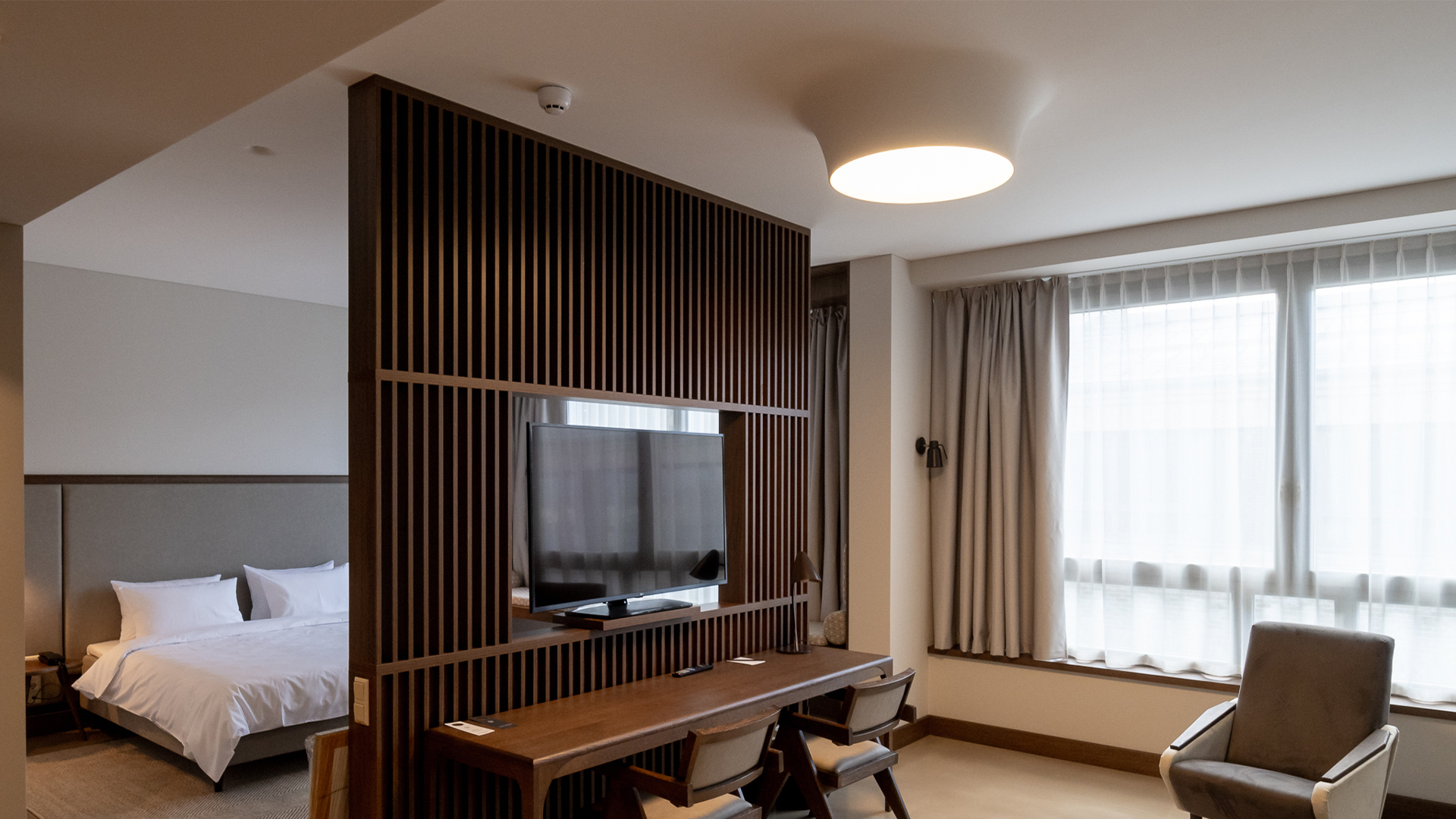
Hotel lighting plays a key role in the overall experience of guests staying overnight. Choosing the right lighting can help create a welcoming, functional and quality atmosphere for visitors. First of all, it is necessary to define the lighting needs of each hotel environment.
How to light a hotel - The example of Neringa
An example of the value that effective choices can have on hotel lighting is given by the charming and renowned 'Neringa' hotel and restaurant. It underwent a renovation that preserved the building's original exterior appearance and historical value, but also led to an expansion of guest spaces and public areas.
Thanks to modern design and lighting solutions, such as 9010 lamps in elegant round shapes of various sizes, placed to illuminate the corridors, reception, rooms and gymnasium, this project achieved a distinctive touch that affected the entire building, enhancing and characterizing its beauty.
How to illuminate a hotel hall
The lobby is one of the crucial wings of a hotel, destined to make a good or bad impression on guests. The lighting must therefore always be such that it conveys the feeling of welcome and makes the ambience as pleasant as possible. It can be illuminated with a dominant or more intimate and cozy light, depending on the effect to be achieved.
Large windows and light curtains can encourage the entry of natural light, while reducing the need for artificial lighting during the day.
To effectively illuminate the lobby, use pendant lamps or ceiling lights to provide diffuse and even ambient light throughout the lobby. You can opt for lamps with opaque diffusers or fabrics that create a soft, welcoming light.
Use spotlights to highlight particular architectural elements, works of art or decorative objects in the hotel's common areas. This additional lighting creates an interesting visual effect and contributes to a unique atmosphere.
Use floor lights or spotlights along the main paths to create a guiding effect and a welcoming feeling, so that corridors and passages along the lobby are properly lit.
Information points in lobbies should be easily identifiable and never left in the dark. Use table lamps or wall lights with direct light to ensure good visibility in these areas.
Escape routes, stairways and emergency areas must be adequately lit to ensure the safety of guests in the event of an evacuation. Emergency lighting, such as LED emergency lights or light strips along escape routes, should be installed in accordance with local safety regulations and in such a way as to provide the necessary lighting.
Which lamps to choose for hotel bedrooms
The lighting to be adopted in hotel bedrooms generally leans towards warm colors, trying to achieve optimal illumination without disturbing.
Modern design chandeliers with sophisticated shapes are suitable choices to give hotels an extra elegant touch.
Wall lights can be used to provide supporting light and create a cozy atmosphere in guest bedrooms. Opt for models with abat-jours or adjustable diffusers to allow guests to customize the intensity of the light.
Table lamps are essential for creating focused, functional lighting on desks, bedside tables or work tables in guest rooms. Choose models with adjustable arms or with adjustable shades to adapt the light to individual needs.
Floor lamps can be used as decorative elements and to provide additional points of light in lounge areas, reading corners or relaxation spaces. Opt for lamps with directional diffusers or indirect light to create relaxing atmospheres.
For hotel room bathrooms, it is important to pay attention to the lighting of the wash basin, but also to the general ambient lighting. Therefore, diffuse lighting provided by ceiling or wall lights is the ideal solution.
How to light a modern hotel with LED lamps
LED bulbs reduce the hotel's energy consumption by providing the necessary light. They are long-lasting light sources, offer quality lighting, and can help reduce energy costs in the long run.
LED strips are known for their energy efficiency, so they are a sustainable choice for hotel lighting: by using LED strips, you can reduce the hotel's significant energy consumption. They can be used to create a cozy and relaxing atmosphere within the hotel's common areas, such as the lobby, corridors or lounge areas. You can place LED strips along walls, along ceilings or around architectural elements to create a background lighting effect.
In order to determine lighting that is consistent with the needs of a modern hotel, an appropriate balance between performance and energy consumption must be achieved so that there is never a shortage of light for guests to pass through.
To this end, it is recommended to use lighting control systems to adjust light intensity and generate different atmospheres as required. LED dimmers, for example, allow you to adjust the brightness of lights according to the preferences of guests and the different activities taking place within the space.
Need suggestions on the best type of lighting for a hotel in need of renovation?